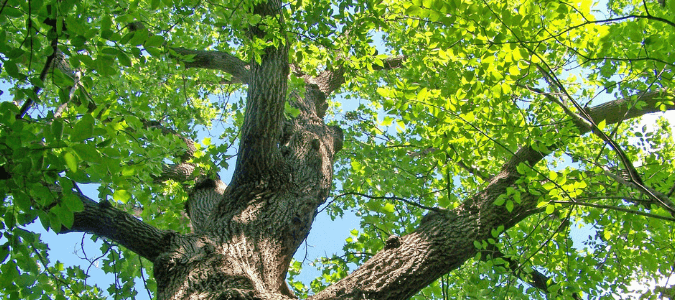
If you live in Austin, San Antonio or any of the surrounding cities, towns and rural spaces that make up the vast and beautiful Central Texas region, you already know something about Central Texas trees: In order not just to survive but to thrive, they have to be able to withstand periods of high heat and drought as well as occasional frigid snaps and deluges of water when the rainy season hits in spring and fall. That’s right—Central Texas trees have to be as tough, hardy and resilient as the people who live here. The best trees for Central Texas landscapes include varieties that can withstand all of the above, along with a variety of soil compositions, including plenty of rocks and limestone. Let’s take a deeper look at some of the best trees for Central Texas gardeners and the outdoor spaces they love.
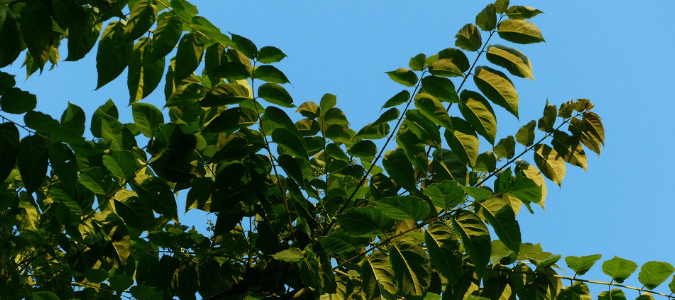
Texas Ash Tree: A Classic Choice For Your Central Texas Property
Trees of all kinds, and especially shade trees, provide all sorts of benefits for their environment that people may not be aware of. Stately branches and gorgeous foliage are beautiful, to be sure, but trees also purify the air even as they help keep temperatures lower and provide the perfect natural habitat for many species of insects, birds and wildlife that are important to the ecosystem. The Texas Ash is a perfect example of a tree native to Central Texas that has lower water needs, can tolerate plenty of heat, and makes a perfect addition to many landscapes.
One of the best things about the Texas Ash tree is its stunning fall colors. When cooler weather sets in, instead of going straight from green to brown as so many other trees in this area do, Texas Ash leaves begin turning bright shades of red, orange, gold and purple. If you are considering planting a Texas Ash tree in your yard, rest assured that it does well with full or partial light and in a variety of soils. It’s on the larger side, growing to 50 feet tall and 40 feet wide at full maturity, so be sure to leave it plenty of room to spread out, and don’t plant it too close to your home.
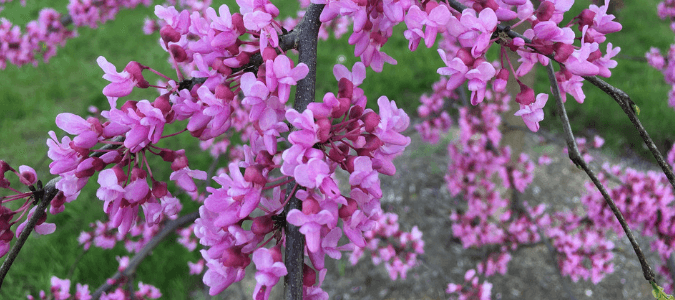
Texas Trees List: Varieties that Flourish In Central Texas
When considering which trees to add to your landscape, keep in mind that most trees need more water in the beginning, after planting, in order to become established. This is especially true if you want your trees to grow as quickly as possible. Many Central Texas trees do well with less water once established. Fall and winter are prime time for planting trees in this region. Potted trees can be planted when cooler weather hits in the fall, while trees with burlap-wrapped root balls should be planted in the winter, when the weather is truly cold (or as close to it as Central Texas gets).
Pecan trees, the Texas state tree, do quite well in the Central Texas region, as long as they have plenty of water. They are a slow-growing variety, and this is especially true if planted in drier soil. Their pecans are a wonderful thing to have on your property. A grafted pecan tree should begin producing nuts within three or four years after planting (although master gardeners will tell you that trees grown from a pecan nut take a few years longer to produce). Each fall, when the nuts begin falling to the ground, you can gather them and eat them right out of the shell. They do attract birds and squirrels, and even deer. Pecan trees are also susceptible to a variety of diseases and insect pests, and their nuts will mold if left on the ground too long before harvesting.
Live oak trees are a very popular choice here in Texas, but it’s important to note that they can be susceptible to oak wilt in the Hill Country region. They also aren’t the best choice for a small lot or to be planted close to a home or other structure, since they can grow to 75 feet in width (and 35-50 feet in height).
Bald cypress trees can grow to be very tall—up to 80 feet! Their needles are easier to clean up than broader leaves that need raking, plus they can be used as a natural and attractive mulch for garden beds. Bald cypress trees do well in wet areas, but they also tolerate a wide variety of soil and water conditions. They are pretty in the fall when their needles change colors, and they are somewhat deer-repellent.
Mesquite trees are a great choice if you’re looking for a smaller-to-medium-sized tree with a lot of visual interest. Mesquites are reminiscent of a southwestern aesthetic, and they’re perfect for landscaping with a desert-y flair. These trees are very drought-tolerant, and they prefer filtered light. They do have thorns, but thornless varieties are also available, and they bear pretty yellow flowers in spring and summer that attract honey bees with their sweet fragrance.
If you’re looking for smaller, more decorative trees, you can’t go wrong with the Texas Mountain Laurel or Eve’s Necklace. The former produces clusters of gorgeous purple flowers that many Central Texans swear smell like grape soda, while the latter’s flowers are rosy-pink in color. Eve’s necklace trees get their name from their clusters of round, black fruit pods, produced in late summer and fall, that look like strings of beads. The Texas Redbud tree is another classic decorative choice that produces gorgeous pinkish-purple flowers in spring before the tree begins to leaf out.
Each of the above three varieties will reach around 15 or 20 feet in height, and their flowers add delightful pops of color to any garden or property. They all do well in the limestone soil of the Central Texas region. While they need plenty of water in their first few weeks or months after planting, they have low water needs after they are established, and can flourish even through dry seasons.
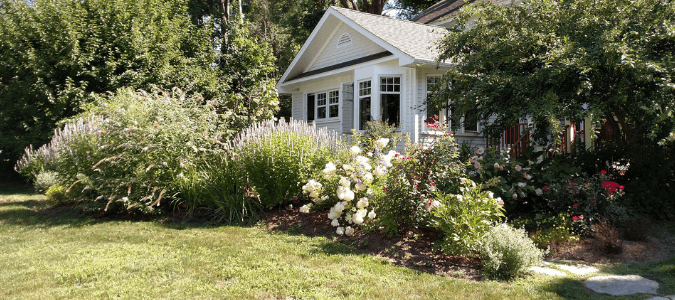
Central Texas Tree Identification
Interested in learning which trees are already growing in your yard, on your property or around your neighborhood? Central Texas has a number of locally grown resources to guide you, whether you’re looking for simple plant identification or more in-depth learning about the many tree varieties that flourish in our area.
Texas is home to one of the most respected research universities in the nation, Texas A&M, which has an excellent horticulture division — a great resource for any homeowner or gardener who is interested in Central Texas tree identification. You can browse the Aggie Horticulture website for lists and photographs of all sorts of Central Texas trees, and get all kinds of information about which trees will thrive in your particular property’s light, soil and water conditions. The Texas A&M Forest Service website is another excellent resource for similar types of research.
The Ladybird Johnson Wildflower Center, affiliated with the University of Texas and located in southwest Austin, features more than 800 species of native Texas trees and other plants in its extensive gardens and arboretum. The Wildflower Center website offers a Native Plants Database to use for to help you select Texas native trees and plants, and the Center also offers a variety of in-person events throughout the year to teach adults and children about Texas native trees, plants, and gardening.
TreeFolks, an Austin-based nonprofit, is also a great resource for anyone interested in Central Texas tree identification. With a mission of empowering Central Texans to build stronger communities through planting and caring for trees, this organization offers tree identification and mapping events such as their Tree ID Strolls and Urban Forest Workshops.
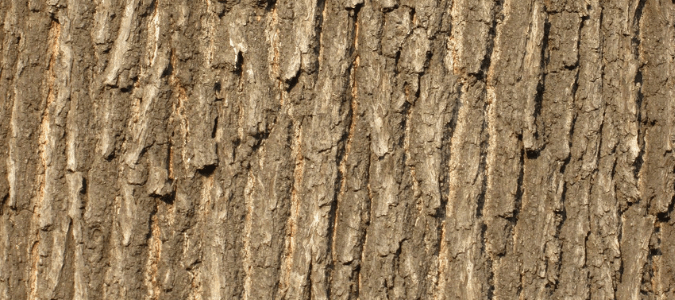
Texas Tree Identification By Bark
Examining a tree’s leaves is the most common way to identify its species, since leaves are quite distinctive from one tree to the next, varying in size, shape, color, texture and other features. Identifying Texas trees by their bark is another useful way to learn about our native tree species, and it comes in handy especially during the winter months, when many Central Texas trees have dropped their leaves. It can be difficult to identify the exact species of a tree by its bark alone, but it’s still an interesting and worthwhile pursuit.
When you’re inspecting the bark of a tree, take note of its color (or colors) along with its texture. Trees with smooth bark include crape myrtles and magnolias, while cypresses, cedars and sycamores all have flaky or peeling bark. Both live oaks and pecans have grooved bark, but the bark of a pecan may look more flaky, with parts that can easily be broken off, while the live oak bark is often quite hard and difficult to break. Cedar and pine trees often have sticky spots on their bark due to their sap.
ABC Can Care For Your Trees
When choosing which tree to plant in your yard, it’s important to consider the features that are unique to your property. Is your soil rocky or compacted? Will you be planting near a ready water source, close to a home or other structure or on the side of a hill? Are there any utility lines nearby? Will the tree have full sunlight as it grows and matures, or do you need to learn more about shade trees Texas homeowners have had success in planting? Then, once your tree is established, will it have enough space to reach its full height and canopy?
These are a lot of factors to consider! If you need help choosing which types of trees to plant or where to plant them, or you’d like help with the actual physical labor of planting a tree, call on ABC Home & Commercial Services. Adding trees to your outdoor spaces increases your property value in a variety of ways if done correctly. Our tree care experts will work with your vision—or help you create one—to design and plant a landscape that will thrive for years to come.
